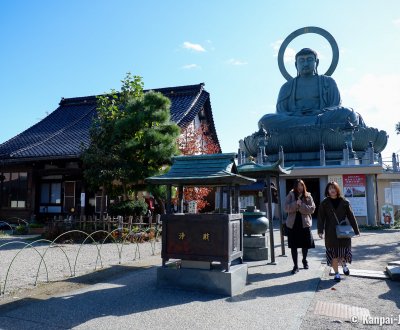Takaoka
Toyama’s Unknown Getaway
Takaoka is a city in the north-west of Toyama prefecture, facing the Sea of Japan. A fortified town in 1609, it lost its castle in 1615 and reinvented itself through copper foundry and decorative lacquer craftsmanship. Its downtown is home to one of the largest bronze sitting Buddha statue of the archipelago as well as to the elegant Zuiryu-ji temple.
The surroundings of Takaoka’s 2 JR stations are similar to any middle-sized cities throughout Japan: a lot of shops, restaurants and stores for daily convenience, but without distinctive feature for sightseers.
However, it would be a mistake not to look beyond the first impression and only prefer most famous places nearby such as Kanazawa. Takaoka has indeed a few surprising and beautiful visits to fill a day trip and within walking distance from the Shinkansen 🚅 station, which connects the city directly to Tokyo in less than 3 hours thanks to the Hokuriku line.
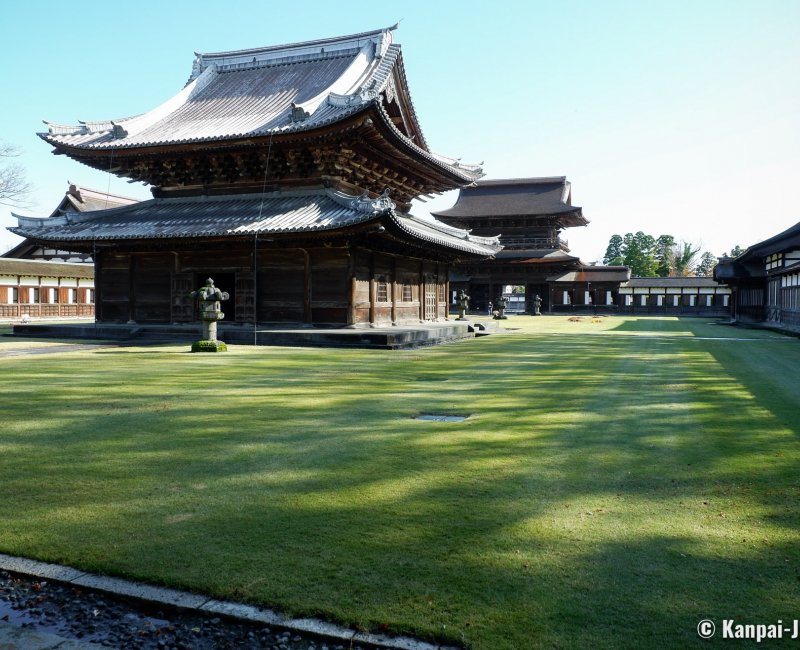
Zuiryu-ji, the majestic temple of the Maeda clan
Zuiryu-ji temple is certainly one of the wonders of Takaoka, and more broadly of the area. It belongs to the Japanese Zen Buddhism Soto school and was built in 1613 on the order of Maeda Toshinaga (1562 - 1614) the second lord of the Kaga domain (that would later be Ishikawa and Toyama prefectures). The grounds were named the following year with its current name, from "Zuiryu-in" which was Toshinaga posthumous name. During the Edo period, the place was also a place of worship for the Hidden Christian, under the influence of Takayama Ukon (1552 - 1615).
The temple’s particularity is its massive and perfectly symmetrical architecture, with its butsuden hall built at the center of the complex and surrounded by lawn. The sight is particularly impressive and is enjoyable from all viewpoints.
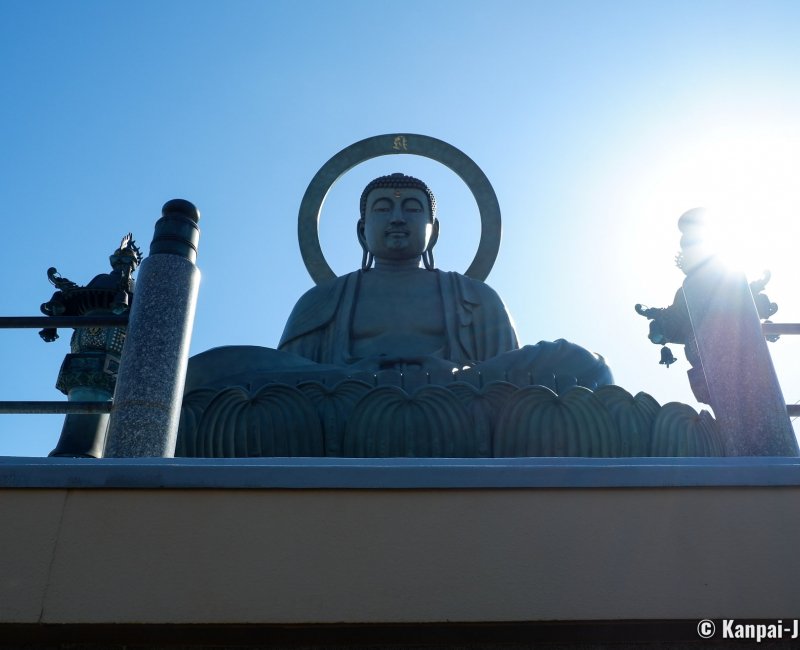
Daibutsu, the city's emblematic statue
Then continue to the great Amida Nyorai Buddha statue at Daibutsu-ji temple. Made of bronze and having mobilized the local artisans’ casting craftsmanship, Takaoka Daibutsu is exhibited in the center of the city. Its impressive measurements make it one of Japan’s largest sitting Buddha: of a 15,85 meters maximum height (including the halo above its head), it tops the Daibutsu of Tokyo (13 meters) and Kamakura (13,35 meters). The construction of this great bronze Buddha started in 1907 and was achieved after 26 years of work. It is enlisted as a National Treasure of Japan since 1981.
The statue is sitting outdoor, surrounded by the streets and the city’s buildings. Its grounds therefore seem quite small and enclosed. The circular basis of the statue shelters a visitable room where several ancient paintings as well as the head of the original wooden statue dating from 1745 are on display.
In the vicinity, we recommend passing by an authentic Meiji Era traditional inn named Kadokyu Ryokan (角久旅館) offering among other things an excellent restaurant for lunch. Take the time to enjoy a meal in a very pleasant traditional setting with a beautiful view on the Takaoka Great Buddha.
The downtown sightseeing tour continues in the alleys of Takaoka Castle 🏯 Park, fabulously adorned with sakura 🌸 blossoms in spring and with maple trees koyo 🍁 red foliage in autumn. Nowadays, only the moat remains from the castle that has been razed to the ground. Once a fortified city from 1609, Takaoka was deprived of its castle in 1615, to the benefit of Kanazawa, upon the order of the Tokugawa shogunate that limited the number of castles to one per province.
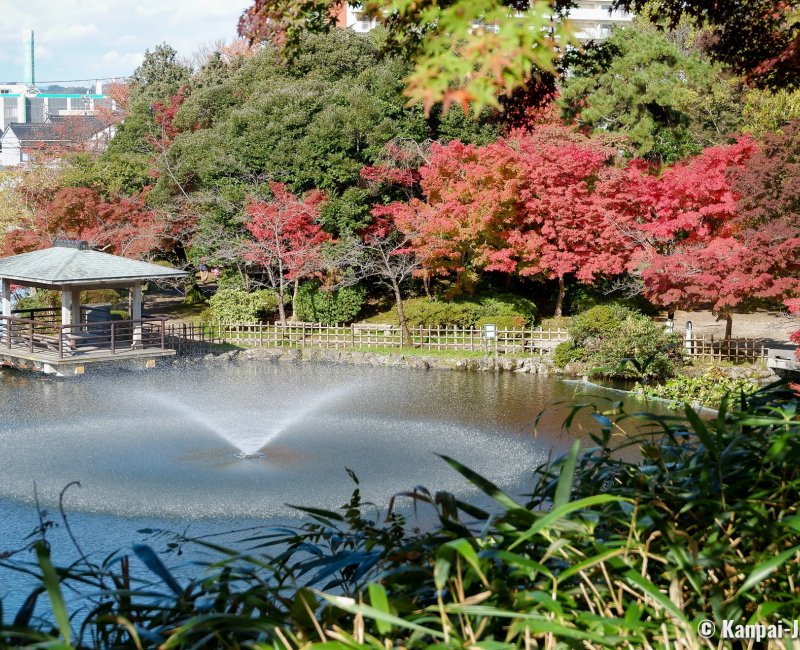
Kanaya-machi, the copper foundry district
Kanaya-machi is the former metal-casting preserved district, a local craft industry initiated thanks to lord Maeda Toshinaga to compensate for the castle’s loss. Toshinaga decided to encourage the development of metal industry by offering the artisans:
- Free pieces of land, of 180×80 meters dimensions;
- A tax exemption on their revenues,
- A guaranteed rights of way and sale throughout the country.
The artisans still produce various copper-based art objects in a more than 500 meters long main street offering a true time travel. The townhouses called machiya, that include a workshop-store part accessible to the public, display their beautiful traditional architecture on both sides of the avenue. The facades are protected by kimusuko lattices whose natural wood color has been aged by time, and their roofs are covered with anthracite color tiles and ornamented. A small local foundry museum is open to all amateurs for visit.
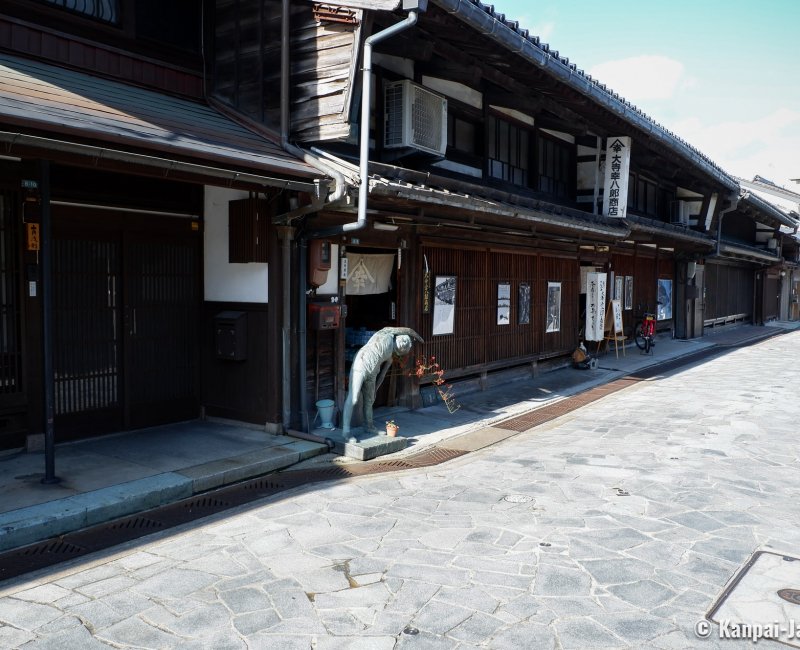
Takaoka is an easy trip from the capital while slightly off the beaten touristic tracks on the side of the Sea of Japan.

